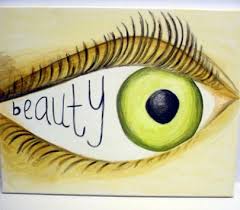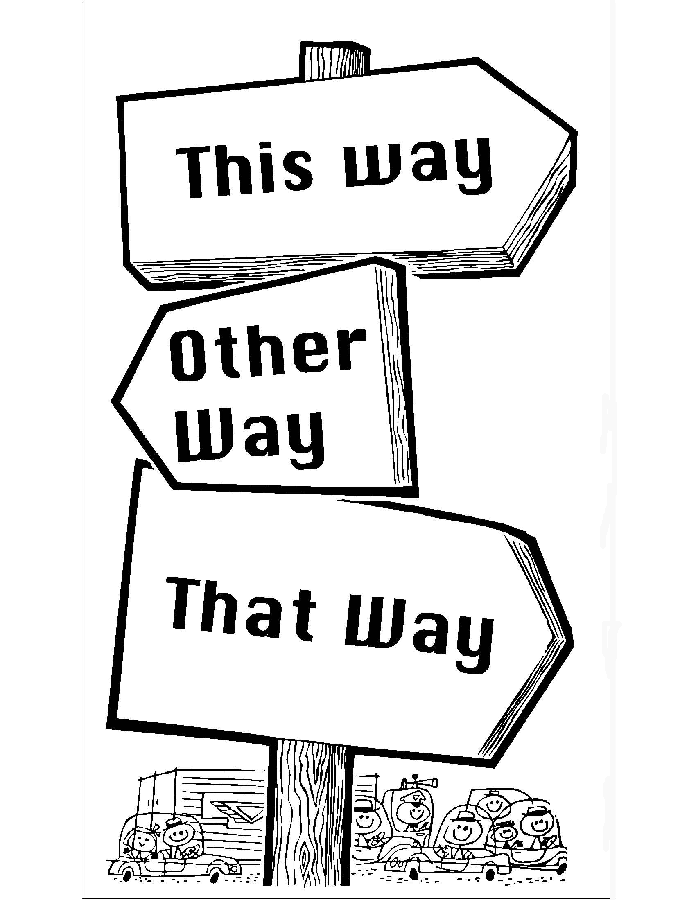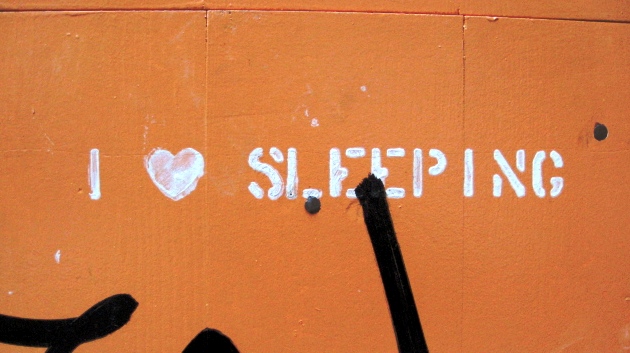
by Deirdre | Jan 23, 2014 | Mindful living
Resolutions are like beauty – the value lies in the eye of the beholder. Maybe you want to integrate new practices or habits that will change the “look” of your life. Big changes that will show up in a tangible way. Or it could be that you want to change the “feel” of your life. Much stays the same but you savor it more.
More often than not it goes one of two ways:
Scenario One
You find a process, learn some skills and make room in your day to practice the new process. Day follows day. You stay pretty much on track. At some point in the future you have a result that you’re really, really proud of.
Scenario Two
You find a process, learn some skills and make room in your day to practice the new process. Day follows day. You fall off track on day 4 or 5. You run conversations in your head about all the times you’ve tried things and they didn’t work. You rationalize why it was a stupid idea in the first place. You feel a bit negative towards the people who’ve mastered this goal. You feel even more negative towards yourself.
Each scenario has its own set of challenges and its own approach for success. Most of us want to initiate action in our lives and see results — we dream of Scenario One. But what we mostly experience is Scenario Two.
And one truth shows up quickly . . .
it’s amazing how fast Scenario One turns into Scenario Two, isn’t it?
This has been the work of BJ Fogg, director of the Persuasive Tech Lab at Stanford. He and his students developed a formula that helps you tweak your habits:
Habit or Behavior = Trigger + (Motivation + Ability)
That’s a smarty-pants way of saying that your motivation and ability (know how) will get the job done, as long as you remember to do it. You may want to go out for a run at the end of the day. You may have all the groovy gear. But if you don’t remember and make it easy to get out the door it’s less likely to happen.
The Wildcard is Motivation
The biggest difference between the two scenarios is how well we understand our motivations. When we’re clear on our motivation we can set up the triggers and tools to take us to our goal. If we’re not clear — and we have competing motivations we don’t completely understand — we’ll slump into Scenario Two once our willpower is exhausted.
So how can we spend more time in Scenario One?
So let’s imagine for a moment that your motivations are clear. Make your plan, brush up on your skills and knowledge, and then set yourself some triggers and reminders to nudge you to the habit. When you start seeing results you’ll stick to the program. You’re just some period of time away from success. Maybe a few weeks or months, but you’ll get there.
Start with a very small, minute version of your habit. If you want to floss your teeth regularly you start with one tooth. The important task is to get a beachhead for the habit and grow it from there. Trust yourself that if you can floss one tooth today you will be able to floss all of them in the near future. Just make the habit stick first.
Pull the trigger
Jerry Seinfeld has one of the simplest trigger systems going. He puts a big calendar on the wall and he puts a big red X on every day that he writes. He explained:
“After a few days you’ll have a chain. Just keep at it and the chain will grow longer every day. You’ll like seeing that chain, especially when you get a few weeks under your belt. Your only job is to not break the chain.”
If calendars aren’t your thing, your smartphone can become your best, naggiest friend. I’ve been using an app called Lift.do that is a version of “don’t break the chain.” It reminds me every day of my commitment and keeps track of when I do it. You can do it with friends who will cheer you on and keep you honest. There is also a whole bunch of already-existing programs that you can jump into and just follow (I’m doing planks every day).
If you’ve done all this and you are still lurching into Scenario Two there is most likely a disconnect between what you think you want and what you really want. I’ll touch on that nest of bees next time.
Posted by Deirdre Walsh
If you enjoyed this post, please share it with your friends!

by Deirdre | Jan 15, 2014 | Mindful living
What is it about this time of year that brings about a rush of resolution?
Or maybe that’s just me. By December 28th the idea of “less is more” always seems like a good idea. I’m ready to slow down and turn inward. To let go of the excess. To remember what it’s like to savor rather than shovel.
But I’ve been to this New Year’s rodeo enough times to know that if I set a resolution because I feel terrible one day it’s doomed to lead nowhere.
We’ve just about reached the point where the initial flush of enthusiasm for our new goals is waning and the challenge of change is getting real. And make no mistake – change is hard. Or, to be real, life-changing, sustainable change is hard.
What is the why behind the how?
If you’re thinking about making changes to your health it’s important to understand what you’re after. Is it to feel better in your body? Do you want to enjoy your days with a peaceful mind? Is it to influence some numbers from your last set of blood tests? Has pain become a bigger part of your daily experience?
A mindful approach to change starts with where you are right now. It can be uncomfortable, dare I say painful, to take a clear-eyed look at this. But if life has handed you some big things to deal with in 2013 – and it did for many people – you had to shift your attention from your good habits for a while. So cut yourself some slack (or practice self-compassion, as it’s called in the mindfulness biz.)
Create sustainable change that makes you feel like a superstar
It’s important to create a plan based on the body you have today. What can you take on given your level of energy, strength and stamina?
Speaking of plans – don’t plan for your feelings to be your GPS. You’re going to feel uncomfortable and incompetent as often as you feel strong and amazing. Be with each of the feelings and honor what it has to tell you. But don’t let any single feeling become the spokesperson. If you get the winter blues then your feelings may guide you to hibernation. Listen to your instincts to rest, but incorporate weekly progress into a sustainable plan.
Be grateful for the good habits you already have. Let me say that again – be grateful for the good habits you already have.
Add a balance of four elements to your healthy plan – exercise, sleep, diet, and mindfulness. Exercise is so helpful to stimulate the body’s rebuilding machinery. It also does wonders for your mood (like clinically significant, side-effect free wonders). Good, regular sleep is when you rebuild. The building blocks come from a diet filled with fresh, whole foods. Shifting away from processed foods reduces a lot of busywork for your digestive system. And finally, mindfulness does so much to restore your brain and nervous system, letting the whole system work smarter.
Don’t take things to the extreme. This goes back to working with your body where it is today. Our bodies are designed to find balance. When we make extreme changes we can get ourselves into a “un-balance” as unwanted as the other one. Like this — a lot of raw juicing with spinach and cabbage can slow down your thyroid and your metabolism. Jumping into the kind of workout you did five years ago (when we were in shape – remember when we were in shape??) can cause no end of trouble to your joints and connective tissue.
The key to sustainable success is a small, daily step that you turn into a habit. I’ve been playing with an online tracking program called Lift.do. It helps you track your daily habits with a few cool features and some great simple programs to join. I’ll get more into the science of Lift next time.
Posted by Deirdre Walsh, Image: iStockphoto
If you enjoyed this post, please share it with your friends!

by Deirdre | Nov 22, 2013 | Mindful living
Christmas is on the horizon. So is a touch of insanity.
Each year it all starts so well, with the shiny promise of a light, love, sparkles and generosity. And we get there. We do get there. It’s just the road between here and there gets a little bumpy. Or teeth-grindey. Or tear-laden. Or something like that.
I get pre-stress stress. Nothing’s even happening yet and I’m feeling tense and my shoulders are heavier. I know the amount of work it takes to get this holiday shiny and bright. I’ve been to this rodeo before. Dreading being tired causes more trouble than just being tired. I’m tired in advance. See what I said – insanity.
Within a day or two of launching the season I feel horribly behind. And I can’t have fun until the work is done. And, as we all know, the work is never done. There’s always a quick refresh of your home to do, a handmade this or that to make, a new stylish something or other and an extra special touch for your extra special loves.
A peak moment – one for the album – happened a few years ago when a friend arrived to pick me up for a Christmas brunch. I came to the door, sobbing. She was immediately concerned, assuming this level of meltdown meant something really terrible had happened. She was ready to help. I sputtered and sobbed and with racked breath I was finally able to get out, “I don’t have cookies to bring.” She gave me a quizzical look and a second chance to share this horrible misfortune that had befallen me. “I was going to bring cookies, and I don’t have them to bring.” She leaned back as if I was going to infect her and said, “Girl, this is what crazy looks like.”
So, what happens to lose perspective to such an laughable degree? It’s a serious over-use and abuse of my nervous system. Here’s the list of too much: demands, events, tasks, ambitions, self-imposed pressure. Here’s the list of too little: quiet, restoration, living in the moment, time-outs. All the “too much” causes a continuous triggering of the stress response and my poor nervous system doesn’t have time to balance and restore. I can’t tell what’s a real danger and what’s normal anymore. My stress alarm system is clanging away to the slightest whiff.
There are specific exercises you can do to trigger your relaxation response to stay in balance. It’s just at Christmas, with the excitement of all the activity, those moments and exercises are the first to go to make room for more, more, more.
One of my mentors, Dr. Jeffrey Brantley, has some ideas to fit the relaxation response into the busy times. He was our meditation teacher at Duke, and his kindly manner was the perfect invitation to giving mindfulness a try.
During the holiday season, give yourself time each day for rest and play. You may need to schedule this, just as you would schedule a meeting or a lunch date with a friend. Also, learn to use the time you are waiting for something or someone as “free time.” Practice being mindful and connecting and being present through paying gentle attention during these times.
Posted by Deirdre Walsh, Image: Deirdre Walsh
If you enjoyed this post, please share it with your friends!

by Deirdre | Sep 7, 2013 | Mindful living
It was the windswept grey curls swirling over the headrest in the gorgeous cream VW Bug that caught my eye. They were two sisters I think, well into their seventies, laughing uproariously and catching the rays. We tracked our progress together for a few miles and I was able to see how much they were enjoying themselves. There was something very palpable in how comfortable they were with themselves. They could have been 17, could have been 35 – they just happened to be 75. Their energy seemed ageless. They were enjoying the hell out of who they are right now.
I was driving home from a client session that had buzzed with laughter and potential. My client has turned a corner. Over the last few months she’s put in the work of starting a mindfulness practice that held promise but not much immediate gratification. She took a chance on herself – putting in time and effort when there was no guarantee of reward. She did it because she knew she was ready for more.
Most of us live at about 60% of what we’re fully capable of. A lot of time it’s because we worry about what change will bring. Can we handle what comes up? Will we need to let go of what we’ve worked so hard to get? But the process of life is growth and change. Eventually the tension of staying still gets cramped and energy draining. We’re pushed into action when discomfort of staying in place gets bigger than the fear of the unknown.
My client put in the work and got the victory. She was tired of living with the feeling of overwhelm. She saw how it was interfering with her happiness and the happiness of her important people. The problem with worry and overwhelm is that they take up space and keep us at 60%. She learned with mindfulness to see worry for what it is — one of many things we listen to when we’re moving forward.
Now she’s ready for a new experience – to consciously write the story for the life that comes next. A story that creates forward movement, not the “looping back to the same place” kind of movement. A story that capitalizes on her strengths, likes, values and accomplishments. A story that will unfold over time. A story where she becomes the hero of her own life.
Seeing those sisters made me imagine my client and her friend 30 years from now – sporting a different look but buzzing with the same kind of energy. They’re sharing the enjoyment of a life lived with gusto. And she’s laughs with ease because she lived life on her own terms. She became the hero of her own life.
You know where you are and what it’s taken to get here. Is it time to figure out how to grow past your 60%?
Posted by Deirdre Walsh
Image: Deirdre Walsh
If you enjoyed this post, please share it with your friends!

by Deirdre | Aug 16, 2013 | Mindful living
“A good laugh and a long sleep are the best cures in the doctor’s book.”
-Irish Proverb
Our bodies have a lot to tell us about what’s going on with our lives. If we can still ourselves and learn to read the messages we have a tremendous ally in unwinding the difficulties of our life. It’s just that sometimes, in the busyness of our days, our bodies need to raise the volume to break through.
The story our sleep has to share with us is a particularly powerful ally. It’s one of the clearest stories we have. We can’t use our willpower to change how our body reacts to our desire to sleep. If we’re awake at 2 in the morning, we’re awake.
I posted a few weeks ago about sleep (click link) as the first part of what insomnia might be trying to tell you. In this post we’ll dive deeper into the messages.
But first a caveat – there are a number of forms of sleeplessness that can be managed with the help of your doctor. If you feel like you sleep through the night, but don’t feel refreshed in the morning, check first with the people you live with. There may be something they can share with you about your sleep habits.
If a housemate complains about your obnoxious snoring then it’s time to talk to your doctor about sleep apnea. There are new therapies in this area that are much less intrusive. Narcolepsy (falling asleep during the day), sleep terrors (like sleep-walking), and REM behavior disorder (vigorous movement when you’re dreaming) will also be evident to observant people around you.
If you’re painfully aware of your lack of sleep then it’s most likely that you’re dealing with plain ‘ole vanilla insomnia. What you’ll notice is that you either have trouble falling asleep or you wake up in the middle of the night.
Angela Hobbs has written an excellent book about all the factors that work against getting a good night’s sleep. She has laid out the subtle sleep irritants that are so engrained in modern life that we don’t even see them anymore.
You can’t fall asleep
Your body doesn’t think it’s time to sleep until your cortisol levels drop down and your melatonin levels rise. If your cortisol is high, then you won’t achieve that “cross over” and you’ll be lying awake until it happens.
Angela calls this a bad night of good sleep. The good news is that when you do nod off you are cycling through all the levels of sleep that repair your body and build your brain. The bad news is that your alarm is ringing before you’ve gone through enough of them.
Your mind re-sorts and organizes the events of the day and lays them into memory during the REM sleep of later cycles. Those are precisely the ones you’re running short on. During the day you may find that your mind is disorganized and you are less productive. You have more problems with memory or absorbing new skills because your brain isn’t integrating your daily learning into solid neural patterns.
There are two reasons this may be happening:
- You’re not be giving yourself enough time to wind down for sleep. Be kind to yourself and unwind your day earlier!
- You may be a night owl. We each have our own rhythm of life and we operate best when we can follow it. Our perfect morning wake-time is hard-wired and there’s nothing we can do to change it.
You sleep lightly and toss and turn
Angela calls this a good night of bad sleep. You are having the evening and morning hormone crossovers, so you are falling asleep and waking at a reasonable time. But you are close to wakefulness for a lot of the night and small disturbances will bring you back to consciousness. During the day this will show up as a lowered immune system because you’re not getting to the deep, restorative levels of sleep.
Reason: All too many
If there’s light in your room and your melatonin levels aren’t high then your body temperature may stay higher and you won’t drop into the deeper sleep cycles. If you chronically stressed then your cortisol may not lower enough to drop you down into deep sleep. The hormones crossover, but your cortisol level doesn’t dip as low as it used to and your melatonin level isn’t as high as it once was. There may be disturbances in the environment, like noise, light and electrical signals that excite your nervous system and prevent deep sleep.
If you wake up for longer periods in the night, that is a different kind of insomnia called psychophysiological insomnia. You may have a tendency to worry or be very aware of “dangers” in your environment. Something may have happened recently that is causing you more stress than usual. And then you worry about whether you’ll get to sleep and stay asleep. In a sense, you have trained yourself to have a bad night’s sleep in your own environment.
There are a few tip offs if this is happening to you. You’ll find that you can’t turn the worry off regardless of what you say to yourself. The worry train comes along and you can’t help yourself to stay off. You find that your muscles are stiff during the day and you get headaches easily. But most importantly, you can sleep well in other situations, like the living room couch or a hotel room.
Here’s what you can do
Practice some hormone balancing routines in the morning and evening.
- First thing when you wake up, get as close as you can to some sunlight. Stand by the window and soak up the sun or go outside for a walk. Getting light to your pineal gland will turn off the production of melatonin and set you up for a normalized hormone cycle for that night.
- In the evening develop some specific self-soothing routines to drop your cortisol level lower before you go to bed. Close down the electronics by 9 pm, start turning off the lights and do something peaceful for two hours before you turn in.
- Take a brisk walk after dinner and before you start your soothing routines. This will help lower the cortisol built up during the day.
- If you try this and start to fall asleep within 10 or 15 minutes, case closed. If not, your natural circadian rhythm may be different from what how your life is arranged and you’ll discover that you’ve been fighting it for years. But that’s a story for a different day.
Posted by Deirdre Walsh
Image: I Love Sleeping by bixentro. Licensed under Creative Commons
If you enjoyed this post, please share it with your friends!

by Deirdre | Jul 19, 2013 | Mindful living
I learned something new last week – about joy.
For a long time I thought joy was kind of cracked-out bliss state, felt regularly only by a certain kind of trusting, slightly delusional, type of person. Not to say that I don’t know joy. I’ve definitely had moments of joy and everyone I know has had moments of joy. But the regular, on-tap experience of joy seems rare.
Then I went to the World Domination Summit in Portland, Oregon. WDS is described as a gathering place for people who want to live a remarkable life in a conventional world. The name is a bit over the top and I was concerned that I’d be lost in a sea of self-aware hipsters. But I was willing to take the chance for something that was intriguing. And I’m glad that I did because what I found was an incubator for joy.
What is joy?
In traditional Chinese medicine, joy resides in the heart. It is the emotion of the summer, where the energy and warmth of the sun makes plants expand, blossom and reach for the sky. When we feel joy we radiate the warmth of our heart. We feel light and buoyant with an aliveness that moves though our bodies.

As I enjoyed the presentations at WDS, ran into my online heroes, and listened to the dreams of fellow attendees, joy was there to stumble on at every turn. People vibrated with the warmth and expansiveness of joy. The kind of joy that comes from being grounded and light, all at the same time. From letting the music of life play through you.
Joy is there in those moments when you make a heart-to-heart connection. When you see something that no one else can see and you make it happen. When you express and receive love, care, and gratitude. It’s those moments when you are fully who and what you are meant to be.
Some seriously joyful people
The conference opened with Nancy Duarte – a goddess of storytelling if there ever was one. (A friend of hers claimed that she printed out THE INTERNET to find the patterns of story). I was thrilled to meet her because she helped my son find his joy – presenting onstage. When he was 11 he re-read her book about a hundred times, absorbing her joy and transmuting it into his joy. She was kind enough to write him a note of encouragement.

Jia Jiang has lived out our deepest fear in the last 100 days with his project to get tougher with rejection. He shared how he set up 100 situations to ask a stranger something unreasonable to get rejected, on purpose. He says that rejection is like chicken. Yummy or yucky, depending on how you cook it. What was most surprising is that he has been rejected only a handful of times and some of the things he’s asked about are pretty outrageous (like pulling over a policeman and asking to drive his car!)

Bob Mills, of whole grain fame, shared his joy of putting people first in his business. He’s 84 and still running his grain milling business near Portland. In the last few years he ceded ownership of the company to his employees, some of whom have been working with him for 20 or 30 years. His joy in sharing abundance with others was palpable. His tip for an abundant life? If you want something to show up in your life, put it on a list and forget about it.
I felt a pang of joy when Dyana Valentine, who I’ve admired from afar, popped up beside me at a book launch party. She radiated shiny, welcoming love and sent me on a mission to bring that joy upward in the world. I suspect she gives that mission to many.
Then there were the people I’d meet in line-ups or the elevator who turned out to be doing incredible things. A woman I chatted with in line for a burger has raised over $30K for to drill water wells in developing countries by spending her birthday swimming from San Francisco to Alcatraz naked. Like, without a bathing suit. A man I startled in an elevator is sailing around the world by himself to entertain-teach kids about the world. A young woman I shared a cab with is reaching out to teens about her (former) addiction issues to save them the suffering she went through. All of them creating something out of their joy.
Getting some joy for yourself
Getting more joy for yourself is simple, just not automatic. Our brains are hard-wired to notice the negative in life. We don’t see the positive that’s springing up around us constantly. We structure our lives to placate our fears instead of cultivating our love.
What I learned from the amazing people I met is that you need to create the conditions for joy in your life. Structure your life so that you become the hero of your own story. It doesn’t mean that you don’t feel fear, regret, sadness, discomfort or any of the other perfectly normal emotions of life. It just means that you get to feel joy, too.
When I’m not feeling the joy I turn to my mindfulness-crush, Rick Hanson. Here’s an excerpt from his book, Just One Thing, on excitement:
Excitement is energy plus positive emotion, and it is part of joy, passion, and having fun. Find something that excites you, even just a bit. Feel the enjoyment in it. See if you can intensify the experience through a quick inhalation, a sense perhaps of the energy rising in your body. Lift your chest and head, and let more aliveness come to your face. Register this feeling of excitement, and make room for it in your body. Then as you go through your day, notice what moves your own thrillometer, particularly in subtle ways. Look for things to get excited about!
Posted by Deirdre Walsh
Images: Chris Gillebeau. Licensed under Creative Commons
If you enjoyed this post, please share it with your friends!









